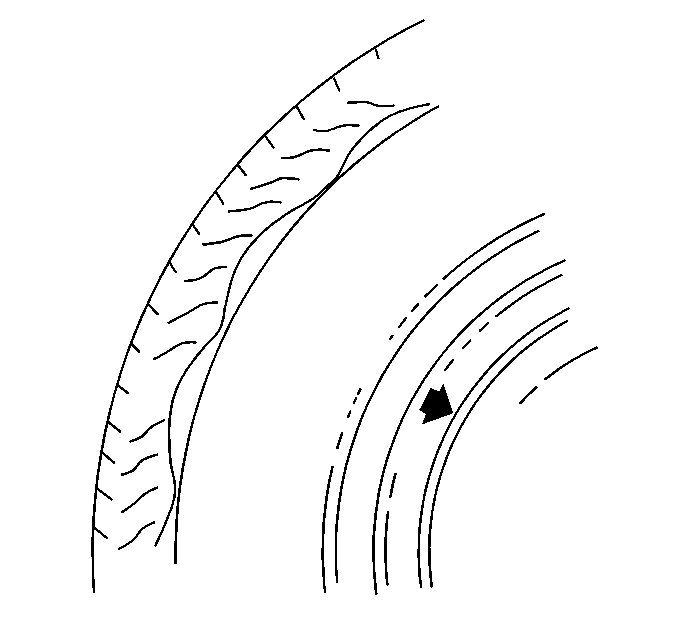Notice: It is important to note that damage to either the tire mounting surface or the wheel mounting holes can result from the use of improper wheel attachment or tire mounting techniques. It takes 70 seconds for all the air to completely exhaust from a large tire. Failure to follow proper procedures could cause the tire changer to put enough force on the tire to bend the wheel at the mounting surface. Such damage may result in vibration and/or shimmy and under severe usage lead to cracking.
Use a tire changing machine to mount or dismount the tires. Follow the manufacturer's instructions. Do not use hand tools or tire irons to change a tire. These may damage the tire beads or the wheel rim flanges.
- Clean the rim bead seats with a wire brush or coarse steel wool in order to remove old rubber and light rust or corrosion. Before you mount or dismount a tire, clean the bead area. Lubricate the bead area well.
- Install the valve core.
- Inflate the tire to the proper air pressure.
- Check the locating rings to ensure these rings show around the rim flanges on both sides of the wheel.
Notice: Do not scratch the clear coating on aluminum wheels with the tire changer attachments, wheel mounting techniques, or tire changing tools. Failure to follow proper procedures could cause the aluminum wheel to corrode and the clear coating to peel from the wheel.
Caution: To avoid serious personal injury, do not stand over tire when inflating. The bead may break when the bead snaps over the safety hump. Do not exceed 275 kPa (40 psi) pressure when inflating any tire if beads are not seated. If 275 kPa (40 psi) pressure will not seat the beads, deflate, relubricate the beads and reinflate. Overinflation may cause the bead to break and cause serious personal injury.

